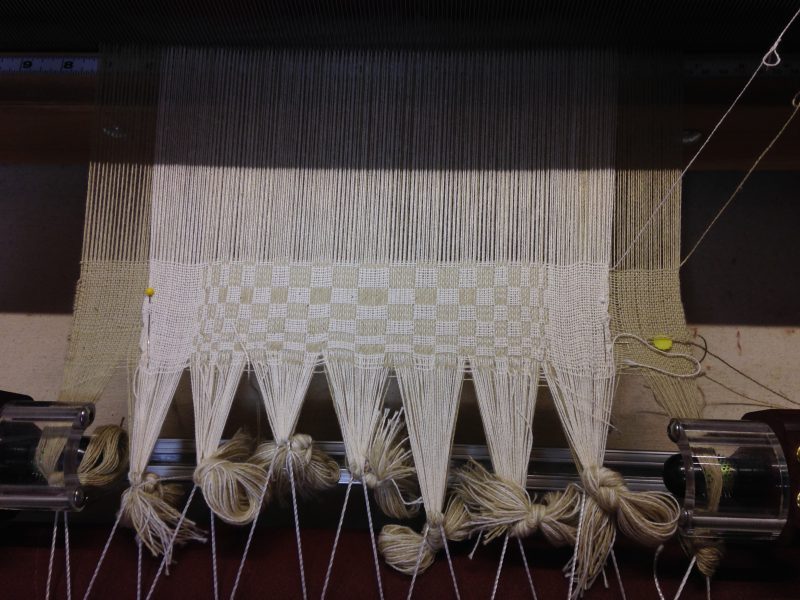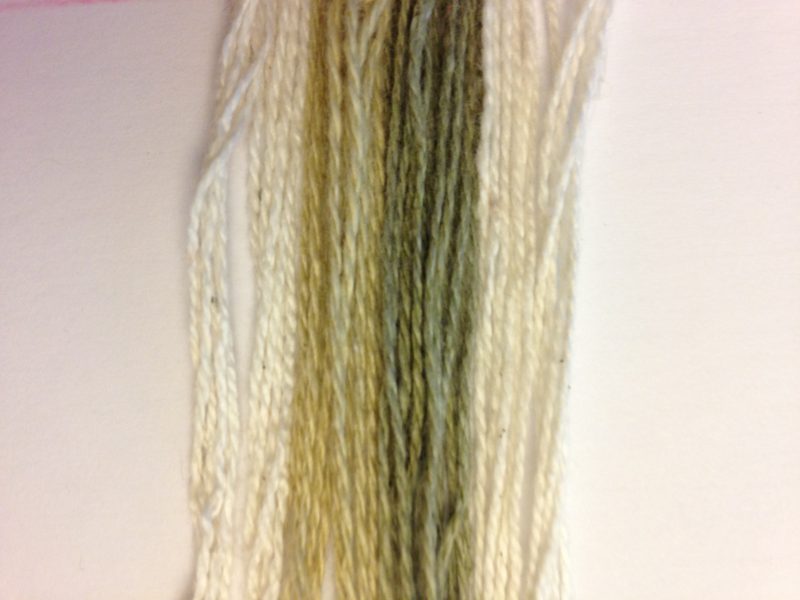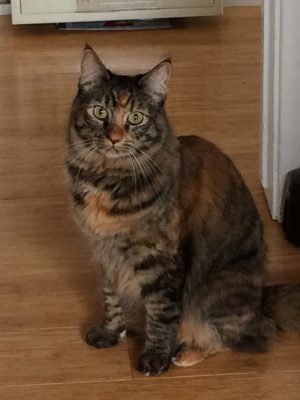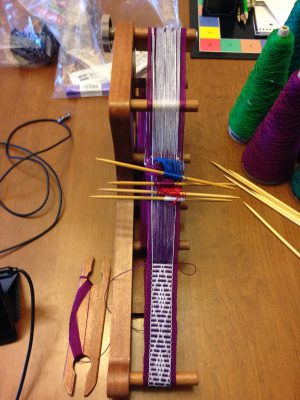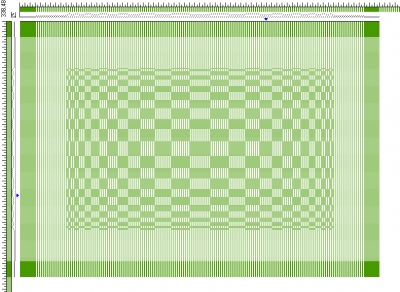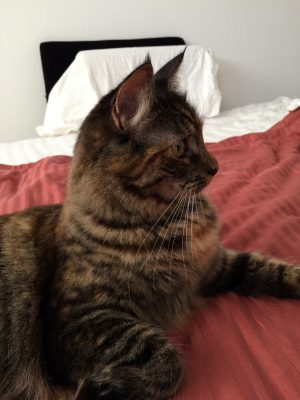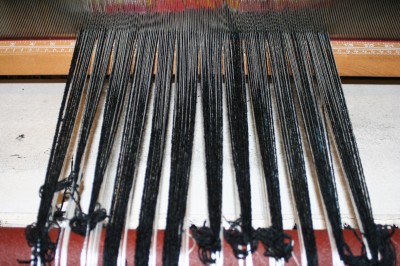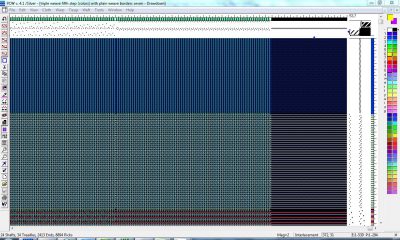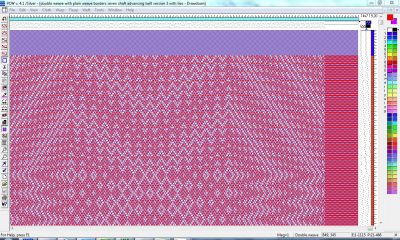I continue to be impressed by the incredible speed with which thicker yarns weave up. I finished my prototype placemat in under an hour, and the first “real” placemat in just forty-five minutes. And that’s with a two-shuttle weave! Compared to the fine-threads weaving I’ve been doing, that’s total instant gratification.
So what about those placemats, you say? Well, here’s the final placemat design. (The hems are not stitched, and it hasn’t been pressed yet – when I went to press it, I found a cat on my ironing board, looking so comfortable I didn’t have the heart to move him. Occupational hazard, at least in this household!)
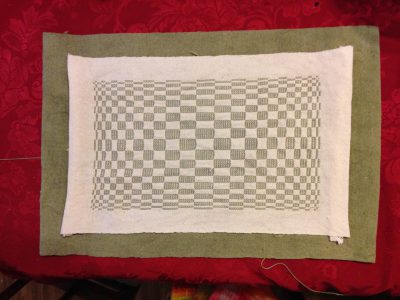
I really like this! It’s on the small side for a placemat (12″ x 18″) but definitely in the acceptable range, and the trompe l’oeil checkerboard design adds curves and a sense of motion to something that often feels too static. My one gripe is that a reasonable size dinner plate covers up most of the design, but that would be true even with a larger design. If I were weaving it over I would make it about 15″ wide and correspondingly long, but I like it quite a bit as it stands.
Lest you think that I arrived at this without effort, I did do a prototype placemat first:
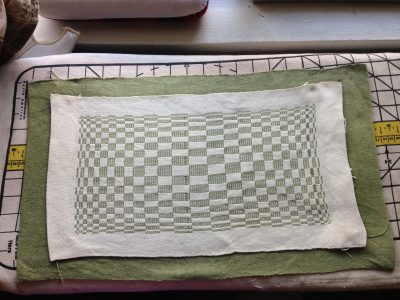
Aside from the glaring weaving error (plus a few more subtle ones), it was also too long – the aspect ratio looked funny. So I shortened it to see what would happen, and liked the result:
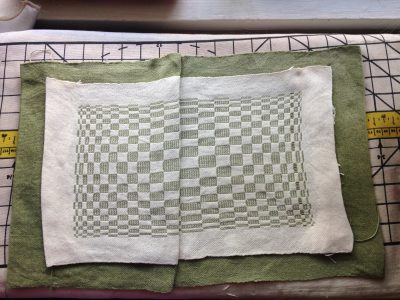
So I used the shortened version in the final placemat design.
You may have noticed that the design looks far greener than before. Here’s what the placemat looked like before wet-finishing:
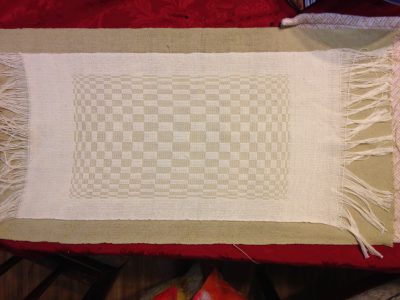
Quite a difference! Here’s a side-by-side view so you can see it more clearly:
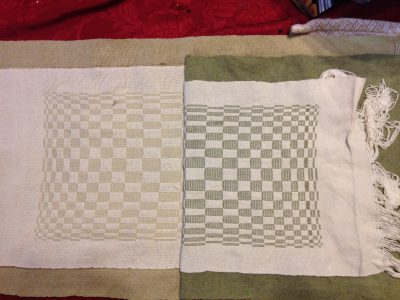
Truly, “magic in the water”!
(I actually simmered the piece in water with soda ash and liquid dishwashing detergent added – that takes out the natural waxes in the colorgrown cotton and really lets the color shine.)
As soon as I finished taking photos, I had to put the placemats away, lest a certain adorable furry critter get to them. Fritz is obsessed with string, and (I’m certain) would happily “string” himself by eating yarn if given the chance. He particularly likes to pull loose threads out of fabric, but he also loves to chase and gnaw on moving strings, as you can see in this photo by our cat sitter:
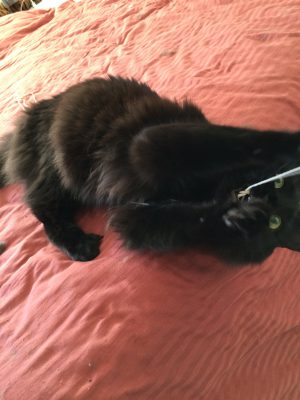
I love Fritz! He has a wonderful gift for looking fierce and adorably silly, all at once. (And he has very nice fangs, as you can see in the photo.)
